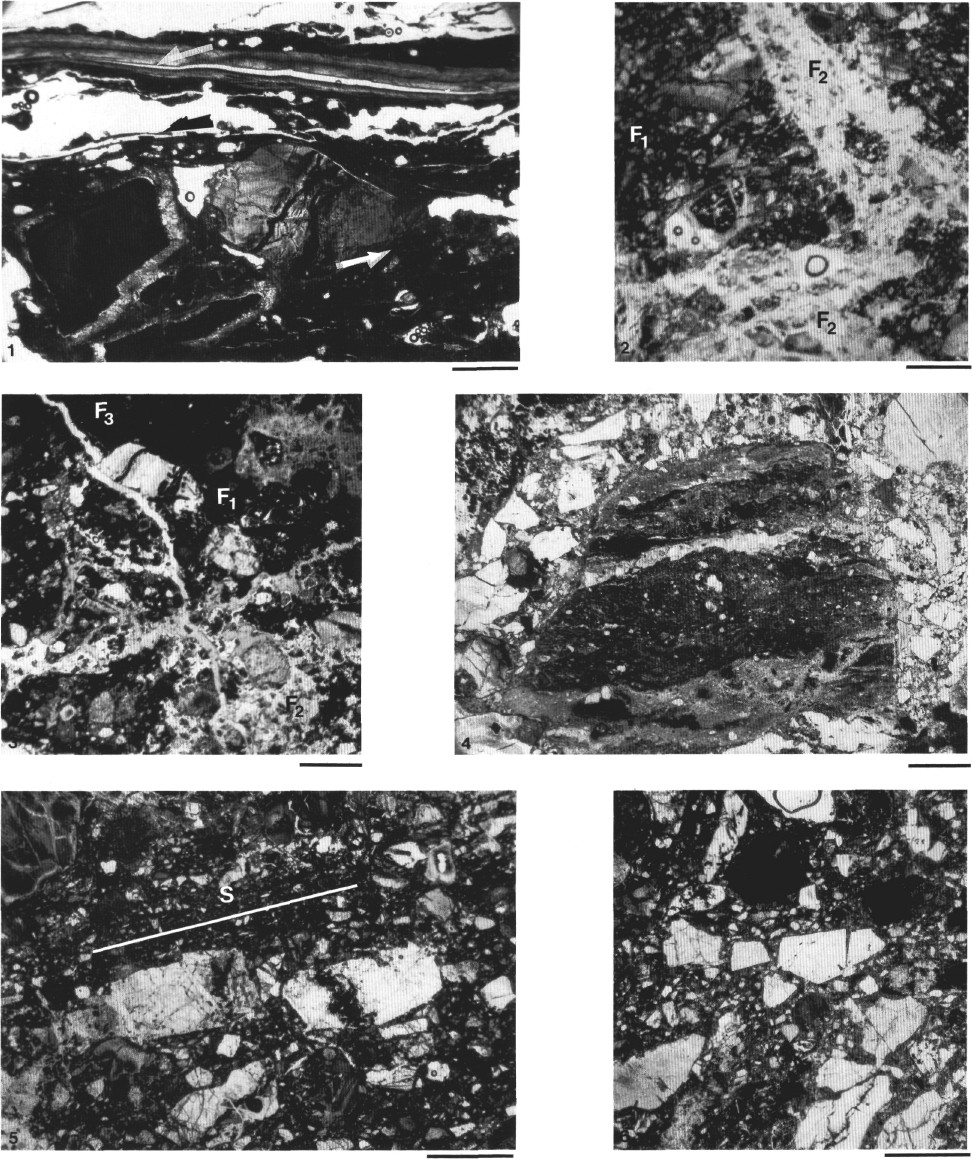Plate 3. Thin-section photomicrographs of cataclasites from Hole 899B, all under plane-polarized light. Scale bar = 1 mm. 1. Sample 149-899B-27R-1, 40–45 cm. Deformational stage D serpentinite
mylonite. Note the serpentine ![]() -type porphyroclast and the serpentine fibers (parallel to top of photograph) that have grown parallel to shear. Arrows indicate the apparent shear sense. Blanks are voids produced during thin-section processing. 2. Sample 149-899B-29R-1, 82–84 cm. Serpentinite cataclasite showing two breccia generations. Phase F1 breccia (early
breccia) consists of serpentine clasts and serpentine matrix. Phase F2 breccia consists of phase F1 breccia clast and serpentine-calcite matrix. 3. Sample 149-899B-29R-1, 73-76 cm. Calcite vein (phase F3) cross-cutting phase F1 and F2 breccias. 4. Sample 149-899B-19R-2, 37-42 cm. Foliated ultracataclasite (deformational stage D) fragment within phase F1
breccia. 5. Sample 149-899B-29R-1, 82-84 cm. Deformational phase F1. Broken porphyroclast consisting of serpentine and opaque mineral (magnetite?) surrounded by vague cataclastic foliation (S). All of the matrix is serpentine. Note the open crack in the porphyroclast filled by matrix. 6. Sample 149-899B-29R-1, 43–48 cm. Porphyroclasts broken during the F1 deformational phase. Note the different degrees of single porphyroclast breakages. Compare with
Plate 4, Figures 4–6.
-type porphyroclast and the serpentine fibers (parallel to top of photograph) that have grown parallel to shear. Arrows indicate the apparent shear sense. Blanks are voids produced during thin-section processing. 2. Sample 149-899B-29R-1, 82–84 cm. Serpentinite cataclasite showing two breccia generations. Phase F1 breccia (early
breccia) consists of serpentine clasts and serpentine matrix. Phase F2 breccia consists of phase F1 breccia clast and serpentine-calcite matrix. 3. Sample 149-899B-29R-1, 73-76 cm. Calcite vein (phase F3) cross-cutting phase F1 and F2 breccias. 4. Sample 149-899B-19R-2, 37-42 cm. Foliated ultracataclasite (deformational stage D) fragment within phase F1
breccia. 5. Sample 149-899B-29R-1, 82-84 cm. Deformational phase F1. Broken porphyroclast consisting of serpentine and opaque mineral (magnetite?) surrounded by vague cataclastic foliation (S). All of the matrix is serpentine. Note the open crack in the porphyroclast filled by matrix. 6. Sample 149-899B-29R-1, 43–48 cm. Porphyroclasts broken during the F1 deformational phase. Note the different degrees of single porphyroclast breakages. Compare with
Plate 4, Figures 4–6.

![]()